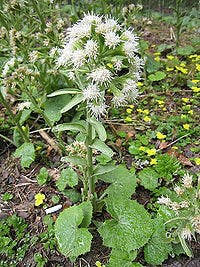Migraine headaches: how to treat them
By Maria Perno Goldie, RDH, MS
Evidence-based guideline update: NSAIDs and other complementary treatments for episodic migraine prevention in adults
Guidelines were updated in 2012 to provide updated evidence-based recommendations for the preventive treatment of migraine headache. The clinical question addressed was: Are nonsteroidal anti-inflammatory drugs (NSAIDs) or other complementary treatments effective for migraine prevention?1 The authors analyzed published studies from June 1999 to May 2009 using a structured review process to classify the evidence relative to the efficacy of various medications for migraine prevention.
Butterbur
Recommendations include the following information. Petasites (butterbur) is effective for migraine prevention and should be offered to patients with migraine to reduce the frequency and severity of migraine attacks. This is Level A evidence. For a description of the levels of evidence, visit the Oxford Centre for Evidence-based Medicine - Levels of Evidence (March 2009).2
Fenoprofen, ibuprofen, ketoprofen, naproxen, naproxen sodium, MIG-99 (feverfew), magnesium, riboflavin, and subcutaneous histamine are probably effective for migraine prevention. This is Level B evidence. Treatments considered possibly effective are cyproheptadine, Co-Q10, estrogen, mefenamic acid, and flurbiprofen (Level C). Data are conflicting or inadequate to support or refute use of aspirin, indomethacin, omega-3, or hyperbaric oxygen for migraine prevention. Montelukast is established as probably ineffective for migraine prevention. This is Level B evidence. Little has been done to assess safety of these agents during pregnancy and breastfeeding.
Feverfew
People who get occasional migraines are more likely to be obese than people who do not have migraines, according to a new study.3 For years, the question of social selection vs. social causation has been raised by public health researchers and social scientists to explain the association between socioeconomic factors and mood disorders. Social selection is the differential action of social conditions or agencies on the longevity and reproductive rates of individuals and strains in the population.4
The “drift hypothesis” is the opposing theory of the social causation thesis, which says being in a lower social class is a contributor to the development of a mental illness.5 The social selection or “downward drift” theory postulates that the disease itself limits an individual's educational and occupational achievements, leading to a lower socioeconomic status (SES).
In contrast, the social causation hypothesis suggests that factors associated with low SES (e.g., stressful life events, poor health care access) increase the likelihood of disease onset or prolonged disease duration.
For the study, 3,862 people with an average age of 47 filled out surveys with information on height, weight, and migraines.6 A total of 1,044 participants were obese, and 188 of the participants had occasional, or episodic, migraines, which is defined as 14 or fewer migraine headaches per month. Obese people were 81 percent more likely to have episodic migraine (of any frequency) as compared to people of normal weight.
According to the authors, the results propose that clinicians should promote healthy lifestyle choices for diet and exercise in people with episodic migraine (EM). The odds of EM are increased in those with obesity, with the strongest relationships among those younger than 50 years, white individuals, and women.7 Further research is needed to evaluate whether weight loss programs can be helpful in overweight and obese people with episodic migraine.
To learn more about migraine, please visit www.aan.com/patients.
References
- S. Holland, S.D. Silberstein, F. Freitag, et al. Evidence-based guideline update: NSAIDs and other complementary treatments for episodic migraine prevention in adults: Report of the Quality Standards Subcommittee of the Society American Academy of Neurology and the American Headache. Neurology 2012;78;1346-1353.
- http://www.cebm.net/?o=1025.
- B. Lee Peterlin and Ann I. Scher. Migraine and the social selection vs causation hypotheses: A question larger than either/or? September 10, 2013 81:942-943; published ahead of print August 29, 2013.
- http://www.merriam-webster.com/dictionary/social%20selection.
- http://en.wikipedia.org/wiki/Drift_hypothesis.
- American Academy of Neurology Press Release, September 3, 2013. Embargoes until September 11, 2013.
- Peterlin BL, Rosso AL, Williams MA, Rosenberg JR, Haythornthwaite JA, Merikangas KR, Gottesman RF, Bond DS, He J, and Zonderman AB. Episodic migraine and obesity and the influence of age, race, and sex. Published online before print September 11, 2013, Neurology. doi: 10.1212/WNL.0b013e3182a824f7.
Maria Perno Goldie, RDH, MS




